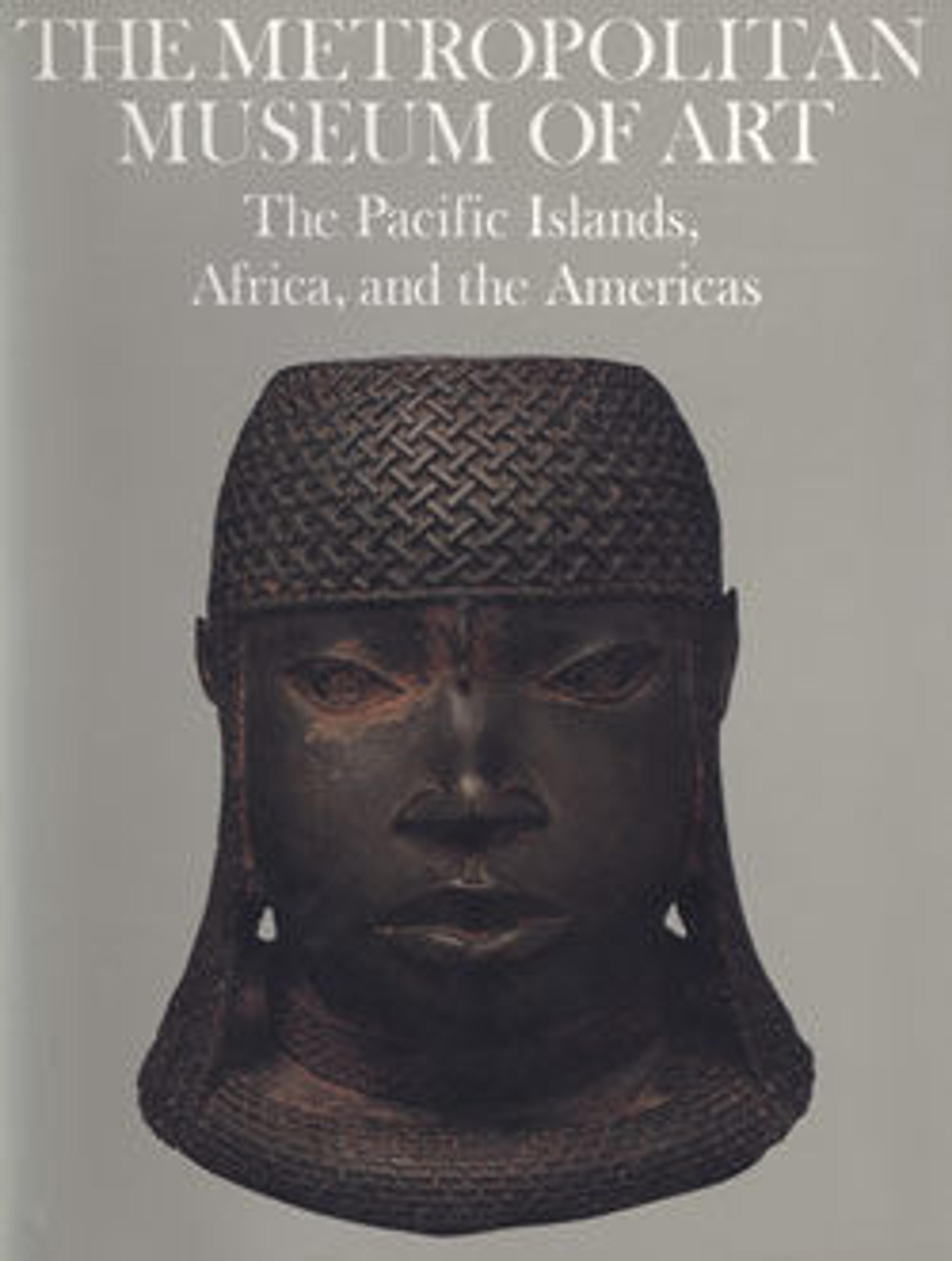Jagana or iagana (carved figure)
The energy inherent in this figural abstraction suggests torque or a force that rotates around an axis. Works carved in this refined style likely performed a diverse range of ritual functions, including serving as oracles. Major segments of the form were blocked out with an adze, while the wrists, hands, face, and double-crested warrior’s helmet were rendered with precision tools. Completed last, its legs are abbreviated in a compressed zigzag, as if poised to spring into action.
This work and a small cluster of related ones, including a more monumental version of this example now in the Beyeler Foundation, Basel, Switzerland, have been attributed to a single sculptor possibly active in the Mumuye center of Pantisawa. First documented by scholars in the 1960s, his compositions have been recognized by art historian Arnold Rubin and others for their bold scale, their dynamic use of negative space, and the delicacy of their wrists and other details. Mumuye carvers of that generation would typically have been itinerant, completing most of their work within the courtyard of the family who commissioned them, rather than in a fixed studio or workshop.
This work and a small cluster of related ones, including a more monumental version of this example now in the Beyeler Foundation, Basel, Switzerland, have been attributed to a single sculptor possibly active in the Mumuye center of Pantisawa. First documented by scholars in the 1960s, his compositions have been recognized by art historian Arnold Rubin and others for their bold scale, their dynamic use of negative space, and the delicacy of their wrists and other details. Mumuye carvers of that generation would typically have been itinerant, completing most of their work within the courtyard of the family who commissioned them, rather than in a fixed studio or workshop.
Artwork Details
- Title: Jagana or iagana (carved figure)
- Artist: “Master of the Pantisawa Workshop” (active early 20th century, Pantisawa[?], Nigeria)
- Date: 19th–20th century
- Geography: Nigeria, Pantisawa
- Culture: Mumuye peoples
- Medium: Wood (Detarium senegalense)
- Dimensions: H. 37 in. × W. 8 in. × D. 6 1/4 in. (94 × 20.3 × 15.9 cm)
- Classification: Wood-Sculpture
- Credit Line: Gift of Paul and Ruth W. Tishman, 1983
- Object Number: 1983.189
- Curatorial Department: The Michael C. Rockefeller Wing
More Artwork
Research Resources
The Met provides unparalleled resources for research and welcomes an international community of students and scholars. The Met's Open Access API is where creators and researchers can connect to the The Met collection. Open Access data and public domain images are available for unrestricted commercial and noncommercial use without permission or fee.
To request images under copyright and other restrictions, please use this Image Request form.
Feedback
We continue to research and examine historical and cultural context for objects in The Met collection. If you have comments or questions about this object record, please contact us using the form below. The Museum looks forward to receiving your comments.
